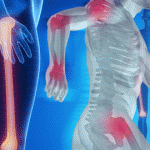(Reuters Health)—Going without sleep the night before does not affect the performance of doctors doing elective surgery the next morning, according to a new Ontario study that runs contrary to research demonstrating that sleep-deprived physicians pose a hazard to patients. The odds of having a surgery-related problem were 22.2% when the doctor had been treating…
Project Increases Pneumococcal Vaccination Rates in Rheumatology Patients
NEW YORK (Reuters Health)—A multicomponent intervention can significantly increase pneumococcal vaccination rates in pediatric rheumatology patients, researchers report. “The interventions outlined in our article can easily be implemented in pediatric rheumatology practices or other subspecialty clinics,” Dr. Julia G. Harris from Children’s Mercy Hospital, Kansas City, Mo., told Reuters Health by email. “It takes additional…
ACR Issues Physician-Driven Position Statement on ABIM’s Maintenance of Certification Requirements
ATLANTA—The American College of Rheumatology has released a statement outlining the ACR’s position on the American Board of Internal Medicine’s (ABIM’s) Maintenance of Certification (MOC) requirements. The position statement was drafted and vetted during a three-month collaboration between ACR leadership and its members where nearly 1,100 rheumatologists provided feedback that was used to formulate the…

FDA Issues Boxed Warning for Hydroxyurea & Neutropenia May Occur after Rituximab Treatments
The FDA has issued a new boxed warning for Droxia (hydroxyurea). Also, according to a new study, RA patients receiving rituximab should be monitored for late-onset neutropenia…

One-Year Transition Period May Ease the Pain of ICD-10
As the Oct. 1 deadline to transition to ICD-10 approaches, the CMS has released multiple resources, including a joint guidance statement with the AMA that details one year of claims leniency to help physicians adjust to the new coding system and smooth the transition process…
Women, Minorities Continue to Be Underrepresented in Medicine
NEW YORK (Reuters Health)—Continued efforts are needed to increase the number of women and minorities in graduate medical education (GME) to ensure a diverse U.S. physician workforce, say the authors of a research letter published today. “Diversifying the physician workforce has been discussed as requisite to addressing health disparities and inequities. Minority physicians continue to…

Vitamin C Derivative Promising Option for OA
New research in mice has found that treatment with a vitamin C derivative can effectively suppress the generation of mitochondrial superoxide, which plays a role in cartilage degeneration and the progression of osteoarthritis…
Depression May Increase Risk of Cardiovascular Disease for RA Patients
(Reuters Health)—Mental health problems, like anxiety and depression, may partly explain why people with rheumatoid arthritis have an increased risk of cardiovascular disease, according to a new study. Researchers linked anger, anxiety, depressive symptoms, job stress and low social support to increasing risk of hardening of the arteries, or atherosclerosis, for people with rheumatoid arthritis…
Gut Microbes Activate T Cells Causing Autoimmune Eye Disease
NEW YORK (Reuters Health)—Commensal microbes in the gut can activate retina-specific T cells that go on to cause autoimmune uveitis in a mouse model, researchers report. “These findings allow us to understand the biological basis for the disease,” lead author of the study, Dr. Rachel Caspi from National Eye Institute at the NIH in Bethesda,…
Oral & Gut Microbiomes Altered in Rheumatoid Arthritis Patients
NEW YORK (Reuters Health)—Patients with rheumatoid arthritis (RA) have alterations in their oral and gut microbiomes that partially normalize with treatment, according to results from a metagenome-wide association study. The microbiota influence metabolic and immune homeostasis, and microbial triggers have been postulated in RA, but little is known about the oral and gut microbiomes of…
- « Previous Page
- 1
- …
- 591
- 592
- 593
- 594
- 595
- …
- 842
- Next Page »